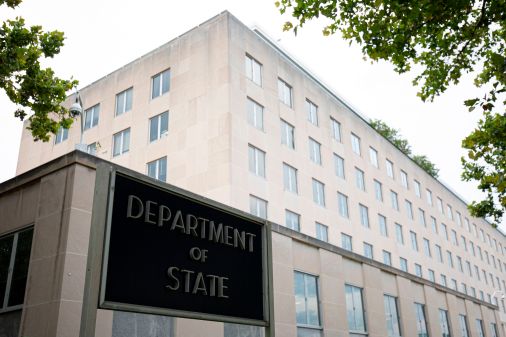How to run an agency Opportunity Project sprint

When it comes to running an Opportunity Project sprint at a federal agency, the best advice Kristen Honey can give is to craft a really precise, difficult question, and then get out of the way and let your collaborators take over.
“They will surprise you,” Honey said.
Honey, an innovator in residence at the Office of the CTO at the Department of Health and Human Services, is fresh off “TOP Health,” a fourteen-week pilot sprint modeled after The Opportunity Project (TOP) at the Census Bureau and run by HHS with help from the Presidential Innovation Fellows program. TOP Health began in October 2018 and wrapped up in January — because of the partial government shutdown, the initiative’s showcase and demo day were postponed until this week.
TOP Health focused on two big and thorny questions: How can emerging technologies like artificial intelligence help match patients to experimental therapies, and how can digital tools and data be used for the prevention of Lyme disease?
While the Census Bureau has run a number of TOP sprints since it took over the program, which began at the White House under President Obama, TOP Health was something different. The experiment: Can another agency organize a TOP sprint around its own data and problem sets? Is the methodology mature enough?
Well, yes. But the three-month-long pilot wasn’t without its challenges. For example, there isn’t yet a formal how-to playbook for TOP. So while HHS had the example of sprints run by Census, it didn’t have any ready-made materials that would have made organizing the initiative a little easier. This is something Honey hopes will come out of the HHS experiment, a set of “TOP in a box” materials that other agencies can draw on moving forward.
But despite organizational challenges, there are big benefits to running a project like this that make wading through the unknown worth it, Honey said.
Above and beyond the products and tools created, which are owned by the industry collaborators, getting feedback on open data, from the people and organizations that use it, is really valuable for agencies.
“The federal government has unlocked a lot of data,” Honey said. “But they range all over the board on discovery, and how accessible they are.” The feedback loop between federal data stewards on the one hand and industry, nonprofit or academic collaborators on the other allows agencies to see the actionable insights that can come from the data.
“And really that’s why we’re unlocking all this data,” Honey said. “It’s not just to add more numbers, to get a higher number on data.gov. You actually want this data unlocked for a purpose.”
All in all, while the future of similar agency-specific TOP sprints remains to be seen, Honey and team are celebrating a successful pilot edition. “The outcome exceeded our expectations,” she said.






